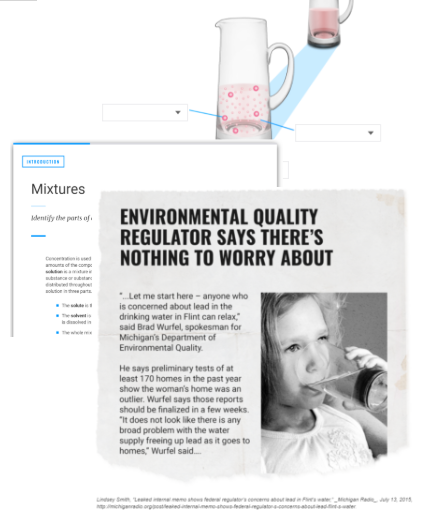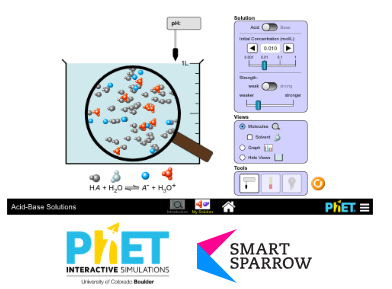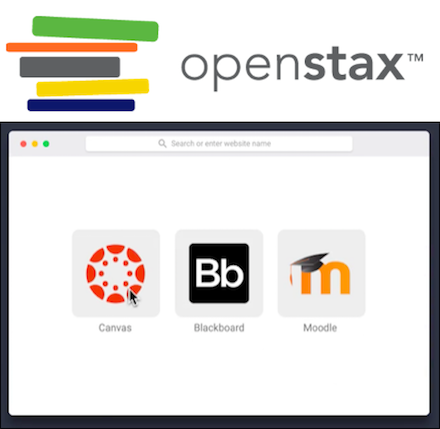Inquiry-based curriculum and case studies promote learning-by-doing and focusing on real-world problems & applications while improving problem-solving and critical thinking skills.
Highly interactive lessons include graphically-rich simulations and activities to help learners explore and understand threshold and complex concepts.
The Bill & Melinda Gates Foundation awarded Smart Sparrow a grant to develop Critical Chemistry. It is low-cost, can be paired with OpenStax, and integrates with the LMS.
Critical Chemistry Curriculum
Critical Chemistry is a next-generation textbook replacement, what we call a Smart Course, for non-majors introductory or conceptual chemistry. It can be used fully online, blended, or face-to-face. The course takes an inquiry-based approach to its curriculum and promotes learning-by-doing, presenting content as case studies focused on real-world problems and applications. Students stay motivated because their learning is contextualized and the journey sparks curiosity while improving scientific literacy.
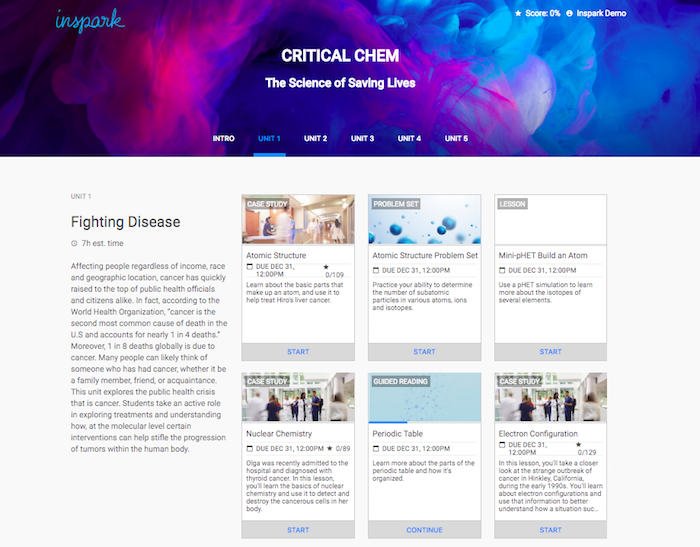
Intro
The purpose of this course is to use chemistry to help solve problems in the world. Quite often, doing so requires a firm grasp of key mathematical concepts. In this unit, you will build the math skills needed to apply the chemistry you learn to investigate and solve issues in the community around you.
Topics covered: Algebraic equation, dimensional analysis, logarithms
Unit 1: Fighting Disease
Affecting people regardless of income, race, and geographic location, cancer has quickly risen to the top of public health officials and citizens alike. In fact, according to the World Health Organization, “cancer is the second most common cause of death in the U.S. and accounts for nearly one in four deaths.” Moreover, one in eight deaths globally is due to cancer. Most people could probably think of someone in their lives who has had cancer, whether it be a family member, friend, or acquaintance. This unit explores the public health crisis that is cancer. You will take an active role in exploring treatments and understanding how, at the molecular level, certain interventions can stifle the progression of tumors within the human body.
Topics covered: Atomic structure, nuclear chemistry, electron configuration
Unit 2: Opioid Crisis Intervention
According to the National Institute of Health, more than ninety Americans die each day from opioid abuse. Prescription medication, heroin, and synthetic opioids are now more prevalent than ever before, and that has significantly impacted the social and economic well-being of entire communities around this country. Such effects have given rise to a state of emergency in the country, with the government taking action to curb what is being called the Opioid Crisis. In this unit, you’ll take on the case of Jack, a college senior addicted to prescription medication. Not only will you explore the underlying chemistry behind his addiction, but you will use it to devise ways to curb his addiction and save him from overdosing.
Topics covered: Lewis Structure, Molecular Geometry, Intermolecular Forces
Unit 3: Safeguarding Water Supplies
Water is a critical resource for all life around our planet. We rely on water to fuel our bodies, to grow food, and for sanitation purposes. When water sources become contaminated, whether by accident or negligence, its effect can be wide ranging—killing wildlife or permanently poisoning an unsuspecting community. In this unit, you will learn the chemistry behind how to detect and save lives affected by contaminated water.
Topics covered: Aqueous Solvation, Concentration, Limiting Reactant
Unit 4: Poisons
In this unit, you will get the chance to explore poisons and how they interact with the human body. More specifically, you’ll dive into the chemical reactions behind these poisons and what makes them so deadly. Along this journey, you will develop key skills such as identifying different kinds of chemical reactions and balancing chemical equations. By the end of this unit, you’ll be ready to walk in the footsteps of a forensic chemist and identify a potential poison left at the scene of a crime.
Topics covered: Balancing Chemical Reactions, Types of Reactions, Empirical and Molecular Formulas
Unit 5: Developing Healthy Diets
They say “you are what you eat”; however, knowing exactly what you’re eating is becoming a greater mystery each day. In this unit, you will take on the question of what food is made of. You’ll explore what a calorie is and decipher how many calories are in the foods we eat. In addition to addressing topics in thermodynamics via the energy stored in food, you’ll also explore the effects of food on the human body through learning about pH. Finally, special attention is given to the effects of the obesity epidemic, how it affects the human body, and ways gas chemistry is involved in treating patients suffering from obesity-related diseases.
Topics covered: Acids and Bases, Gas Laws, Thermochemistry
Efficacy
Independent evaluator SRI Education has shown Inspark Science Network Smart Courses can increase student performance of up to half a letter grade compared to traditional textbooks.
SRI Education, the independent evaluator for the Gates Foundation-funded Next-Generation Courseware Challenge, estimated the impact on students’ end of course grades, for 1,800 students at 4 institutions, of the BioBeyond Smart Course (19 sections) compared to business as usual instruction (BAU; 8 sections). Results, based on analysis of course grades and controlling for prior cumulative college GPA, and other demographic and administrative variables, show a statistically significant positive impact on grades for three of the four institutions (p < .05).
The statistically significant improvements were roughly half a letter grade (+0.42 and +0.46 on a 0–4 scale with 4.0 being an A) for Arizona State University (fully online) and Miami Dade College respectively (blended/hybrid), and +0.26 for Mohave Community College (blended/hybrid).
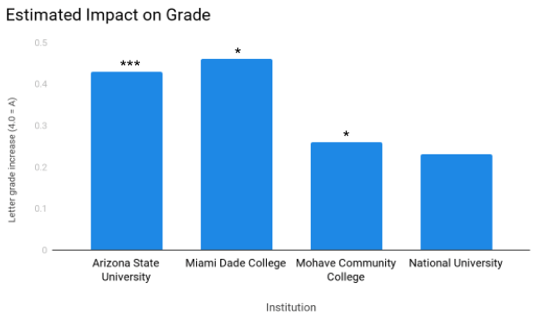
The Inspark Science Network in partnership with Smart Sparrow and Arizona State University's Center for Education Through Exploration is reimagining science education by providing you Smart Courses that allow you to effectively teach with rich interactive and adaptive learning experiences that improve scientific reasoning and spark curiosity.
Get access to course
